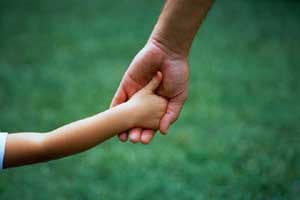WE SAY NO TO BULLYING
WE SAY NO TO BULLYING ON NATIONAL DAY AGAINST BULLYING
In her 17 year professional career Clinical Psychologist Miranda Mullins has seen many cases of bullying and the serious effects that it can have on children. However, in more recent years, Miranda has seen a more powerful form of online bullying.
“Bullying can trigger anxiety, feelings of loneliness and even anger. It can impact on a child’s self-confidence, concentration at school and enjoyment of day to day activities.
Sometimes it triggers feelings of shame and distress that prevent disclosure to those who can help. Sometimes the impact on a child’s beliefs about themselves and their relationships with others can have long-term effects” she says.
In recent years the accessiblity of the internet and social networking has increased the opportunity for bullying, extending its reach beyond the school yard into the home.
“New technologies are rapidly changing out social interactions and can result in home no longer being a safe place for those being bullied” she says.
Online social networks, like Facebook and Twitter and the accessibility of mobile phones can be a key source of emotional distress for a child or teenager who feels excluded or victimised.
New research from Kids Helpline (2013) suggests that due to the more covert nature of cyber bullying and the ablity to reach a wider audience, it may indude a more severe reaction in children and adolesecents and traditional bullying.

For example, cyber bullying can involve the public humiliation or embarrassment of a child across a wider audience, plus the bullying behaviour can be more invasive as the bullying can infiltrate the victims’ home and privact through the use of the internet and mobile phone.
According to a survey by Kids Helpline (2013) most cyber bullying occurs in late primary school, focusing on physical appearance and is experienced slightly more often by girls.Source: Kids help line online March 2013.
Miranda explains that there are some complex aspects to online interaction that can lead to specific challenges but there are many effective tools to deal with it, which will depend on the specific situation.
Miranda shares some professional advice with parents and teachers dealing with bullying and cyber bullying:
- Encourage open communication about school and social experiences and be aware of changes in your child’s behaviour or emotions.
- Supervise internet and phone use where possible, this will be more difficult with older children and teenagers so developing boundaries and rules surrounding this technology might help
- Be aware of any reluctance to go to school, reports of stomach aches or other physical symptoms and an increase in irritability can all be signs of bullying (but can indicate other worries and sources of stress also).
- In some instances damaged or missing possessions and scrapes and bruises can be indicators.
- Responding calmly will help the child to feel supported and safe. Explain what bullying is and that verbal attack via email, social media or phone is not acceptable.
- Make it clear that any type of bullying is unacceptable, is not their fault, and that you are available to help.
- Help them think of different coping strategies and consider what might work best.
- Encourage and support reporting the bullying.
- The awareness of bullying when it is occurring and the message that it is unacceptable are the best antidotes, so education in the classroom and development of an anti-bullying community is essential
To discuss strategies for dealing with bullying, contact Miranda Mullings at Psychology Consultants Morningside.
(p) 3395 8633 (e) [email protected]
